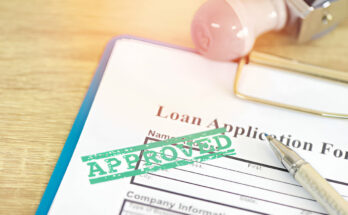How to Get Rid of Private Student Loans
As someone who has struggled with private student loans, I understand how difficult and frustrating it can be to get rid of them. Private student loans are quite difficult to manage, with high interest rates and rigid repayment options. However, with the right steps and information, you can take to get rid of your private student loans and regain control of your finances.
But before you think of getting rid of this loan, you must first understand your repayment options. This is because private student loans do not have the same protections and repayment options as federal student loans, but there are few ways to negotiate with your lender so you can have the option to refinance your loans at a lower interest rate or negotiate a better payment plan that is more favorable to both parties.
Read also: Best Credit Card for International Travel
What are Private Student Loans?
Private student loans are educational loans offered by private financial institutions such as banks, credit unions, and other private lenders. Unlike federal student loans, which are offered by the government, private student loans are not subsidized and have higher interest rates.
Difference Between Federal and Private Student Loans
One of the key differences between federal and private student loans is the source of funding. Federal student loans are funded by the government, while private student loans are funded by private financial institutions. Federal student loans come with fixed interest rates, while private student loans have variable interest rates that can change over time. Additionally, federal student loans offer more flexible repayment options and lower interest rates compared to private student loans.
Read also: Top Travel Credit Cards with No Annual Fee
Terms and Conditions of Private Student Loans
Just like every loan program out there, private student loans come with terms and conditions that vary depending on the lender. These terms and conditions include the interest rate, repayment period, and fees associated with the loan. Private student loans often have higher interest rates and shorter repayment periods compared to federal student loans. While the terms and conditions can be somewhat difficult to read and understand, it is important you pay close attention to the key points mentioned here before signing or accepting the terms.
Consequences of Defaulting on Private Student Loans
Defaulting on private student loans can have serious consequences which is why you are advised to review the terms of the loan before signing.
By signing the terms of the contract for the loan, you give the private lenders the right to take legal action against you when you default on their loans. Defaulting on your loan can also result in wage garnishment, seizure of assets, and damage to credit scores. You can avoid all these by staying current on loan payments and constantly communicating with lenders if you are experiencing financial difficulties.
Strategies to Eliminate Private Student Loans
Here are some strategies you can explore to get rid of private student loans with less stress;
-
Student Loan Refinancing
One of the most effective ways to eliminate private student loans is through refinancing. By refinancing your loans, you can consolidate multiple loans into one, potentially lowering your interest rate and monthly payments. This can save you money in the long run and make it easier to manage your debt.
To refinance your private student loans, you’ll need to meet certain eligibility requirements, such as having a good credit score and a stable income. You can compare rates and terms from different lenders to find the best option for your needs.
-
Negotiating with the Lender
If you’re struggling to make your monthly payments, you may be able to negotiate with your lender to lower your interest rate or change your repayment terms. This can make your payments more manageable and help you avoid defaulting on your loans.
To negotiate with your lender, you’ll need to provide evidence of your financial hardship and explain why you’re unable to make your current payments. You can also explore options like deferment or forbearance to temporarily pause your payments.
While some lenders may not give their approval to this on your first attempt, providing accurate proof and contact communication before your payment due date is an effective way of solving this initial refusal.
Read also: Best Money-Saving Apps for Nigerians
-
Student Loan Forgiveness Programs
There are cases where you might be eligible for student loan forgiveness programs that can help you eliminate your private student loans. These programs are typically available to borrowers who work in certain fields, such as public service or education, and meet other eligibility criteria.
To apply for loan forgiveness, you’ll need to submit an application and provide documentation of your employment and loan history. If you’re approved, your loans may be partially or fully forgiven.
-
Bankruptcy Considerations
While it’s generally difficult to discharge student loans in bankruptcy, it may be an option for some borrowers who are facing extreme financial hardship. To qualify for bankruptcy discharge, you’ll need to meet certain criteria and demonstrate that repaying your loans would cause undue hardship.
Note that bankruptcy should only be considered as a last resort, as it can have serious long-term consequences for your credit and financial stability.
Some additional strategies to eliminate private student loans include:
-
Seeking Public Service Loan Forgiveness
Borrowers working in public service fields, such as government or non-profit organizations, may be eligible for the Public Service Loan Forgiveness (PSLF) program. Through this program, borrowers who make 120 qualifying monthly payments while working full-time for a qualifying employer may have the remaining balance of their Direct Loans forgiven. It’s important to ensure that you meet all eligibility requirements and submit the necessary documentation to apply for PSLF.
Overall, there are several strategies you can use to eliminate your private student loans. By exploring your options and taking the right action, you can work towards financial freedom and peace of mind.
Read also: Chase Travel Card: Your Ultimate Guide to Travel Rewards
Finally, it is important you only explore credible and legal options with appropriate proof while trying to get rid of your private student loans because trying to cheat the system may result in serious legal actions that would affect your credit score and other finances.



